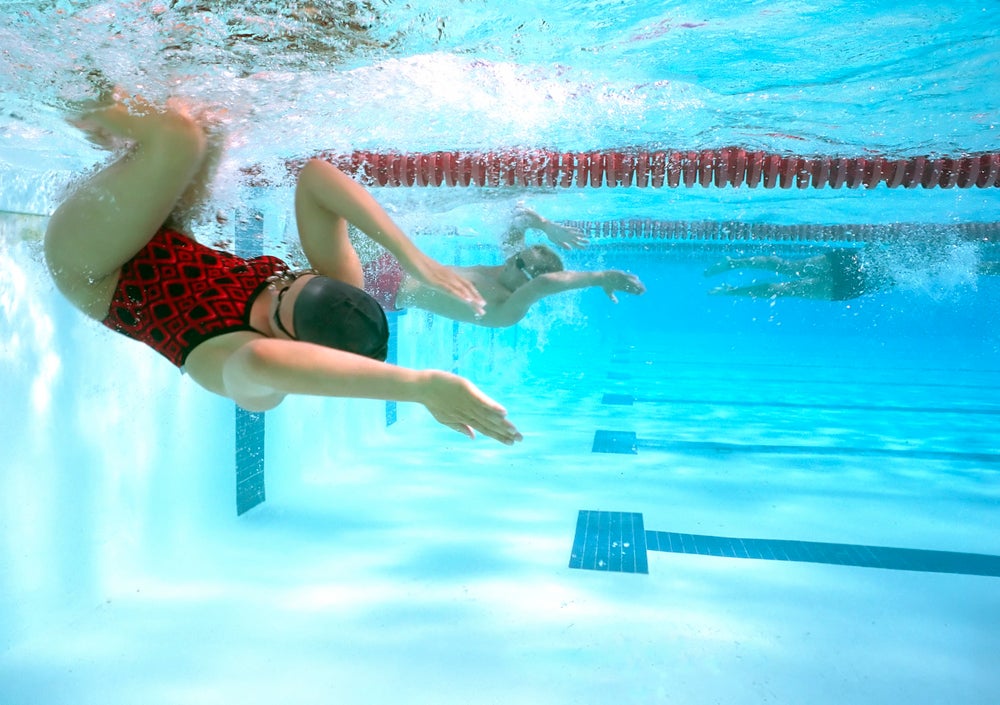Coach Debate: Do Triathletes Have To Flip-Turn?

Photo: <a href=http://shutterstock.com>Shutterstock.com</a>
Triathletes who grew up swimming have no problem doing flip-turns all day long, but newer swimmers often opt for the less-intimidating wall turn. How necessary is it for triathletes to take the time to become an efficient flip-turner? We asked Earl Walton, head coach of Tailwind Endurance in New York City, to debate the topic with our resident swim expert, Sara McLarty.
Sara: A majority of the time spent in the water should be focused on improving technique, being more efficient and building endurance. There are no flip-turns in an actual triathlon—just steady swimming. Why spend time and energy learning something that you won’t even use on race day? A quick open turn on the wall is simple and comfortable.
Earl: Do you remember the movie “Scream”? That mask is all I can think about when I see a triathlete make an open turn at the wall.
You make an excellent point. There are no walls in the open water, so why waste precious training time working on tumbling drills? Because you need to learn to keep going to be successful in this sport. An open turn allows a mental and physical break in the swim.
Sara: An open turn can turn into a short break, but it doesn’t have to. Learning how to turn with grace is actually very simple. Swimmers who gasp for air during an open turn are nowhere near ready to learn a flip-turn. They first need to address their breathing and efficiency. Doing a quick open turn can also be an opportunity to glance at the clock. Checking your pace every 50 yards is a great way to learn how to control your mind and body in the water.
Earl: Think about riding a bike. Do you get to the top of the hill, stop, check your pace and congratulate yourself, or do you increase the cadence and crest the hill? You move on, as you should in the swim. Plus a flip-turn can improve your bike strength—firmly planted feet on a wall simulate a squat. How about 20 squats for every 500 yards?
Sara: If an athlete has time to spend learning flip-turns, then I say go right ahead! But if you’re time-crunched, I highly recommend spending those minutes focused on getting better in the open water.
Earl: The off-season is coming, and if you have no other swimming goals for next month, you’ve just been given one: Learn how to do a flip-turn in four weeks. Ask a coach or friend for help or study this flip-turn video.
RELATED – Video: How To Do A Flip-Turn
5-step guide to graceful turns:
Wall turn
Step 1: Swim into the wall with one arm stretched out.
Step 2: Touch the wall.
Step 3: Tuck your legs up under your torso.
Step 4: Push your upper body away from the wall.
Step 5: Plant your feet on the wall and push off.
Flip-turn
Step 1: Swim into the wall with one arm stretched out.
Step 2: Tuck your chin to your chest.
Step 3: Pull the outstretched arm to your hip.
Step 4: Throw your legs over your head.
Step 5: Plant feet on the wall and push off.
RELATED – Coach Debate: How Often Should Swim Tools Be Used?